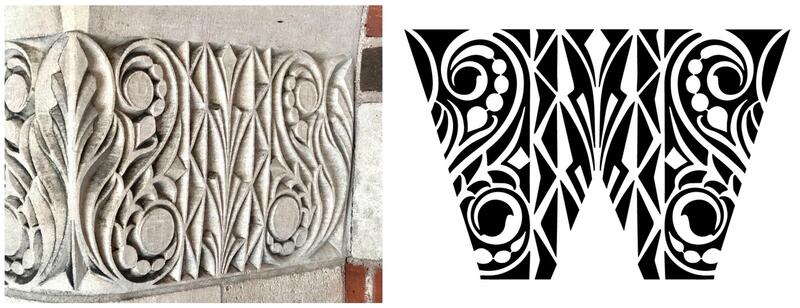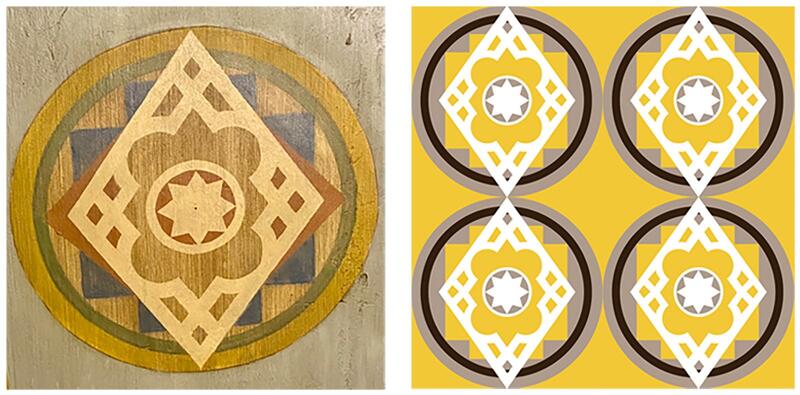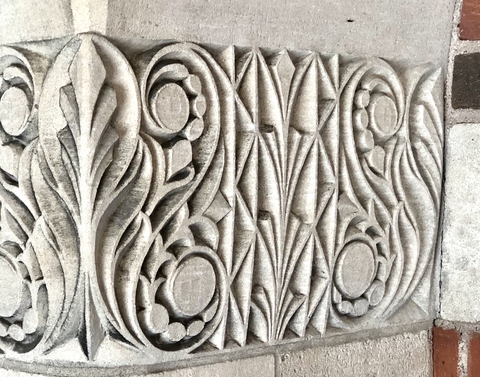Making Space for the Humanities
Founded in 1981, the Whitney Humanities Center has long been represented by a single image that graced the second-floor lecture room at 53 Wall Street: a carving of a ship above the mantle. But that ship sailed when the Whitney moved out of 53 Wall Street and into HQ at 320 York Street, from the outskirts of campus to the center of humanities conversations and initiatives. Here, amid the generalized buzz of humanities events and programs, the Whitney will need to stand out from its surroundings. As Director Alice Kaplan and Associate Director Diane Berrett Brown considered how to distinguish the Whitney visually within this new shared space, they turned to the best designer they knew.
For Rick Rawlins, principal at Rick Rawlins/Work in Salem, Massachusetts, the building itself provided all the artistic inspiration we would ever need. Just past the stone heads at the entrance of HQ, visitors pass through a colonnade. The capitals atop the columns bear a distinctive interlaid pattern, welcoming the visitor to a building that is surprising, intricate, and never quite what you expect. Rick took this pattern and crafted it into the shape of a W, allowing the W—for Whitney—to echo the building’s exuberant stonework. 
He then identified other architectural elements, such as this medallion in the ceiling just past the colonnade, that he repeated and combined to create a full range of patterns that will appear on signs, within posters, and on our website. Even the color palette is drawn from the beautifully restored windows of 320 York.
These patterns serve not just as a visual identifier of the Whitney; they also signal the Whitney’s “unique vision,” as Rick puts it, as well as its “aspiration” to “go beyond what has been done in the past.” The profusion of stone carvings will be wherever people look as they enter the building, and the Whitney, by associating itself with that those patterns in all their exuberance, speaks to its identity as a center where the humanities can come together. As Diane Brown points out, the design elements are “drawn out of the space itself” and “designed to fit beautifully within the space.” The Whitney is more than a particular building or set of rooms; it is an evolving space for humanities conversations, a set of pressing questions and concerns that grow out of the past to try to investigate and to better the present.
These design elements at the Whitney represent the hopeful anticipation of our return to physical spaces on campus next year. Some of them will allow us literally to point the way to events in a new space, but more than that, to foster a sense of community within a changing world. The humanities are about understanding the past, but also about going beyond what has been done in the past, about putting past, present, and future in conversation.

Clio Doyle is a postdoc in the English department at Yale. She works on stories about the invention of agriculture in medieval and early modern literature.

